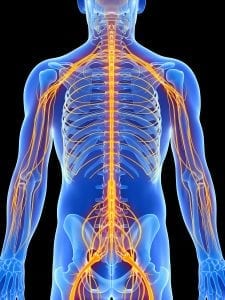Comments Submitted to the VA on the Changes to the Ratings for the Digestive System
- Published:
- Last Updated: October 3, 2022

The following are the comments we submitted on your behalf to the VA in regards to the proposed changes to the ratings of the Digestive System. After the VA publishes their proposed changes, they always allow a period for comments. Thank you for submitting your comments to us so that we could submit them in a unified front to the VA. Hopefully, we will be able to effect change and make the rating system more fair for all veterans.
We at www.MilitaryDisabilityMadeEasy.com would like to submit the following comments on behalf of our staff and veterans in response to the proposed changes to the ratings of the Digestive System.
Comment #1.
For code 7203, Esophagus, stricture of, the definition of “refractory” requires at least 5 dilation treatments at 2-week intervals. With the rating requirements, the minimum rating this would qualify for would be 50%, since that requires 3 or more dilation treatments/year. Yet, refractory strictures are included on the 30% rating, though by definition they cannot qualify. Please adjust the requirements to clarify exactly how many dilation treatments are required for the various rating levels and for the condition to be considered refractory.
Comment #2.
The rationale for rating both GERD (code 7206) and Hiatal Hernia (code 7346) under code 7203 states that “these criteria consider symptoms of esophageal obstruction and irritation.” This is not the case, however. The wording of code 7203 only includes dysphagia as a ratable symptom. The 0% and 10% ratings both require no other symptoms and the 30% rating requires dilation. Under the current rating requirements these conditions could both easily qualify for a 30% based on heartburn, reflux, pain, etc., but there is no clear way to rate these symptoms on the proposed requirements for 7203. Both of these conditions, therefore, will have no way to be properly rated on the symptoms they cause. Please consider adjusting the rating options so that these symptoms can continue to contribute to the ratings for these conditions.
Comment #3.
For code 7329, the proposed ratings for 60% and 100% are inconsistent. The 60% rating simply states a “total colectomy without high-output syndrome.” A logical 100% rating would then simply be a total colectomy with high-output syndrome. Instead, additional requirements are included in order to achieve the 100% rating (ileostomy, 3 or more episodes of dehydration, etc.).
Because of the significant jump between rating requirements, inconsistent ratings are likely to be applied in cases that fall between these two requirements. For instant, a total colectomy with high-output syndrome, but no ileostomy.
We request that the VA clarify the rating requirements to ensure appropriate ratings between the 60% and 100% levels, with the potential to add an intermediary 80% rating to cover the cases that fall between.
Comment #4.
Under the 60%, 30%, and 10% ratings for code 7332, the incontinence requires “wearing” a pad a specific number of times each week or month.
The “wearing” requirement for the pads is a bit difficult to distinguish unless the incontinence episodes are 100% predictable. If there are two episodes/week, the patient would likely wear pads every day since they wouldn’t be able to predict when the episodes would occur.
The 100% rating uses “changing” as the pad requirement instead of just “wearing.” A similar wording of the 60% and 30% would then allow pads to be worn regularly, just in case, but only the need to change them after an episodewould qualify for the rating.
Comment #5.
Dietary modification is used as rating criteria under a number of codes, but the phrasing is inconsistent. “Prescribed dietary modification,” “dietary intervention,” “dietary restriction,” etc. In order to clarify and ensure consistent application, we request that the terms are either standardized throughout if all mean the same thing, or clearly defined if there are differences.
Similarly, though numerous important terms are clearly defined in 4.112, these terms are not consistently used throughout the proposed ratings. For example, under code 7355, “weight loss resulting in wasting and nutritional deficiencies” does not clearly specify weight loss as defined in 4.112. Similarly, the term “malabsorption syndrome” is used in this code, but not defined in the rating schedule. It ultimately results in undernutrition, so “undernutrition” could be used in place of it since the defining symptoms support the accompanying ratings. Again, consistency in terminology throughout will greatly help reduce confusion and aid consistent application.
Comment #6.
For code 7347, a 60% rating requires hospitalization for complications of pain or enteral feeding. Enteral feeding is not included in any of the other rating options for this code. Under other proposed codes, enteral feeding is rated 80% with no caveats for number of hospitalizations or complications. Further clarification is needed on how to rate this condition if it requires enteral feeding, regardless of whether or not that feeding causes complications. Please also consider applying the 80% rating for enteral feeding in order for it to align with the rest of the proposed ratings.
Comment #7.
Under code 7356, the wording for the 50% rating is unclear.
“With recurrent emergency treatment for episodes of intestinal obstruction or regurgitation due to poor gastric emptying, abdominal pain, recurrent nausea, or recurrent vomiting.”
Is the emergency treatment only for the intestinal obstruction or also for the regurgitation? Is the obstruction also “due to poor gastric emptying, abdominal pain, recurrent nausea, or recurrent vomiting” or is that only for the regurgitation? Adjusted wording for further clarification would be appreciated.
Similarly, the 30% rating requires symptoms of CIPO and intestinal motility disorder, but CIPO is an intestinal motility disorder, so this is repetitive and misleading, implying that these conditions are separate and distinct with different symptoms. Please clarify for clarity and correct application.
Thanks for considering our comments on the proposed changes to the ratings of the Digestive System.
Recent Posts
TDRL vs. PDRL—Which is better for disability benefits?
Leukemias and Multiple Myelomas NOW on the Presumptive List
Two MORE Conditions added to the Burn Pit Presumptive List
The 2025 VA Disability Rates are here!
About Us









